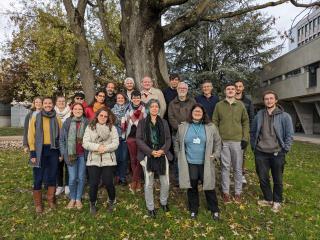Bioinformatics, Phylogeny and Evolutionary Genomics Group
Members
Maîtresse de conférences
UCBL
Tel: 04 72 44 84 87

Professeure des universités
UCBL
Tel: 33 04 26 23 44 76
Doctorante
UCBL
Enseignant-chercheur CPJ
UCBL
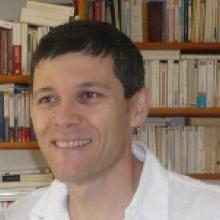
Directeur de recherche
CNRS
Tel: 33 04 72 44 62 97
Doctorant
CNRS
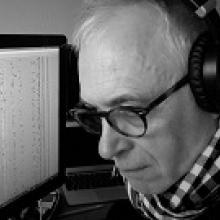
Professeur d'université émérite
UCBL
Tel: 04 72 44 85 60
Ingénieur d'études CDD
CNRS
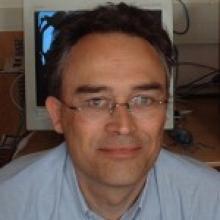
Directeur de recherche
CNRS
Tel: 33 04 72 43 11 67
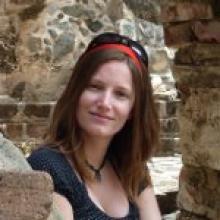
Maîtresse de conférences
UCBL
Tel: 33 04 72 43 29 18
Doctorante
UCBL
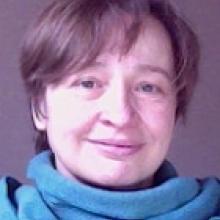
Chargée de recherche
CNRS
Tel: 33 04 72 44 85 60
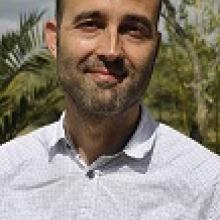
Directeur de recherche
CNRS
Tel: 04 72 44 84 87

Chargée de recherche
CNRS
Tel: 04 72 43 13 44

Directeur de recherche
CNRS

Maître de conférences
UCBL
Tel: 04 72 43 35 83
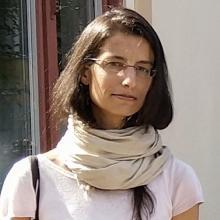
Chargée de recherche
CNRS
Tel: 04 72 44 81 42
Doctorant
CNRS

Directeur de recherche
CNRS
Tel: 33 04 72 44 62 96

Chargée de recherche
CNRS
Tel: 04 72 43 26 28
Doctorant
UCBL
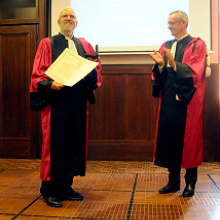
Chercheur invité
UCBL
Our group focuses on two main axes: phylogenomics (i.e. the inference of evolutionary history based on genomics data) and evolutionary genomics (understanding the molecular and population processes that drive genome evolution). We see genomes both as a subject of research (how do genomes evolve, why are they structured the way they are?), but also as a main source of empirical knowledge about the macroevolutionary patterns (what do they tell us about the history of life on Earth?), or about the phenotypes and life-history strategies of organisms. Our works heavily rely on methodological developments (bioinformatics, modeling and statistical inference).
Evolution of genome architecture and expression
Genomes are the result of a long-term evolutionary process, shaped by multiple evolutionary forces. Some genomic features are adaptive (i.e. are beneficial for the fitness of organisms), others result from non-adaptive processes (random drift and biased gene conversion - BGC) or are caused by conflicts between multiple levels of selection (e.g. meiotic drive or the spread of selfish genetic elements). We explore different aspects of genome architecture (base composition landscapes, genome structure and size, impact of transposable elements, …) or functioning (gene expression, lncRNAs, epigenetic landscapes, …), and try to disentangle the relative contribution of adaptive and non-adaptive processes to their evolution. For this purpose, we consider both the molecular mechanisms (mutation, repair, recombination) and the population processes (selection, drift, BGC, …) that shape genetic variation.
Phylogenomics
We are interested in reconstructing the history of life on Earth. This research unfolds along several axes. First, we develop phylogenomic databases of aligned genetic sequences (e.g. BIBI, RiboDB or HOGENOM). Second, we conduct methodological research on how to accurately reconstruct deep phylogenies, infer divergence times, reconstruct ancestral genetic sequences, gene repertoires and life-history traits. This methodological work is translated into publicly available software programs (e.g. SeaView, PhyloBayes, Coevol). Finally, we apply these approaches to several important problems, among which: reconstructing the phylogeny of animals, of archaea, or the global tree of life; using phylogenies and ancestral gene repertoires to investigate the evolution of complex systems and the emergence of molecular and cellular functions in the three domains of life; reconstructing ancestral genetic sequences, a research activity that has industrial and biotechnological applications.
Teaching and outreach
We teach at University Lyon 1 (Master Bioinfo@Lyon), INSA, ENS Lyon, we organize bioinformatics internships. We regularly give conferences on evolution (tree of life, human evolution, genetic diversity, …).
Prospective students and postdocs are invited to apply, as we often welcome visitors for internships or research projects.
Keywords: Molecular evolution and Population Genomics; Phylogenomics; Computational Genomics; Comparative genomics; Bioinformatics; Statistical inference.
Publications
Display of 241 to 270 publications on 1109 in total
Francisella tularensis: FupA mutation contributes tofluoroquinolone resistance by increasing vesicle secretion and biofilm formation
Emerging microbes & infections . 8 ( 1 ) : 808-822
Journal article
see the publicationComparative genomics and proteogenomics highlight key molecular players involved in Frankia sporulation
Research in Microbiology . 170 ( 4-5 ) : 202-213
Journal article
see the publicationEvolutionary placement of Methanonatronarchaeia
Nature Microbiology .
Journal article
see the publicationGeneSpy, a user-friendly and flexible genomic context visualizer
Bioinformatics . 35 ( 2 ) : 329-331
Journal article
see the publicationArticle 5. L’émergence des eucaryotes : une mosaïque d’ADN
101 secrets de l’ADN. CNRS Éditions, Paris, pp 39-41 . : 39-41
Book chapter
see the publicationDynamic Interactions Between the Genome and an Endogenous Retrovirus: Tirant in Drosophila simulans Wild-Type Strains
G3 . 9 ( 3 ) : 855-865
Journal article
see the publicationRepeat in genomes: how and why you should consider them in genome analyses
Encyclopedia of Bioinformatics and Computational Biology . 2 : 210-220
Book chapter
see the publicationEarly Sex-Chromosome Evolution in the Diploid Dioecious Plant Mercurialis annua
Genetics . 212 ( 3 ) : 815-835
Journal article
see the publicationDetecting adaptive convergent amino acid evolution
Philosophical Transactions of the Royal Society B: Biological Sciences . 374 ( 1777 ) : 1-11
Journal article
see the publicationEvolution of Young Sex Chromosomes in Two Dioecious Sister Plant Species with Distinct Sex Determination Systems
Genome Biology and Evolution . 11 ( 2 ) : 350-361
DOI: 10.1093/gbe/evz001
Journal article
see the publicationGenomic imprinting mediates dosage compensation in a young plant XY system.
DOI: 10.1101/179044
Preprint
see the publicationComplete human mtDNA genome sequences from Vietnam and the phylogeography of Mainland Southeast Asia
Scientific Reports . 8 ( 1 )
Journal article
see the publicationGenetic structure and sex-biased gene flow in the history of southern African populations
American Journal of Physical Anthropology . 167 ( 3 ) : 656-671
DOI: 10.1002/ajpa.23694
Journal article
see the publicationMatriclans shape populations: Insights from the Angolan Namib Desert into the maternal genetic history of southern Africa
American Journal of Physical Anthropology . 165 ( 3 ) : 518-535
DOI: 10.1002/ajpa.23378
Journal article
see the publicationHigh-resolution mitochondrial DNA analysis sheds light on human diversity, cultural interactions, and population mobility in Northwestern Amazonia
American Journal of Physical Anthropology . 165 ( 2 ) : 238-255
DOI: 10.1002/ajpa.23345
Journal article
see the publicationStrong selection during the last millennium for African ancestry in the admixed population of Madagascar
Nature Communications . 9 ( 1 ) : 932
Journal article
see the publicationThe Comoros Show the Earliest Austronesian Gene Flow into the Swahili Corridor
American Journal of Human Genetics . 102 ( 1 ) : 58-68
Journal article
see the publicationCultural Innovations Influence Patterns of Genetic Diversity in Northwestern Amazonia
Molecular Biology and Evolution . 35 ( 11 ) : 2719-2735
Journal article
see the publicationBiased Inference of Selection Due to GC-Biased Gene Conversion and the Rate of Protein Evolution in Flycatchers When Accounting for It
Molecular Biology and Evolution . 35 ( 10 ) : 2475-2486
Journal article
see the publicationSex‐biased gene expression, sexual antagonism and levels of genetic diversity in the collared flycatcher ( Ficedula albicollis ) genome
Molecular Ecology . 27 ( 18 ) : 3572-3581
DOI: 10.1111/mec.14789
Journal article
see the publicationPositive selection on human gamete-recognition genes
PeerJ . 6 : e4259
DOI: 10.7717/peerj.4259
Journal article
see the publicationClose inbreeding and low genetic diversity in Inner Asian human populations despite geographical exogamy
Scientific Reports . 8 : 9397
Journal article
see the publicationA novel subfamily of bacterial AAT-fold basic amino acid decarboxylases and functional characterization of its first representative: Pseudomonas aeruginosa LdcA
Genome Biology and Evolution . 10 ( 11 ) : 3058-3075
DOI: 10.1093/gbe/evy228
Journal article
see the publicationProgress and Prospects in Gender Visibility at SMBE Annual Meetings
Genome Biology and Evolution . 10 ( 3 ) : 901-908
DOI: 10.1093/gbe/evy056
Journal article
see the publicationUnbiased Estimate of Synonymous and Nonsynonymous Substitution Rates with Nonstationary Base Composition
Molecular Biology and Evolution . 35 ( 3 ) : 734-742
Journal article
see the publicationLoss-of-Function Mutations in UNC45A Cause a Syndrome Associating Cholestasis, Diarrhea, Impaired Hearing, and Bone Fragility
American Journal of Human Genetics . 102 ( 3 ) : 364 - 374
Journal article
see the publicationPASTA repeats of the protein kinase StkP interconnect cell constriction and separation of Streptococcus pneumoniae
Nature Microbiology . 3 ( 2 ) : 197-209
Journal article
see the publicationObligate sugar oxidation in Mesotoga spp., phylum Thermotogae , in the presence of either elemental sulfur or hydrogenotrophic sulfate-reducers as electron acceptor
Environmental Microbiology . 20 ( 1 ) : 281-292
Journal article
see the publicationConditional Approximate Bayesian Computation: A New Approach for Across-Site Dependency in High-Dimensional Mutation–Selection Models
Molecular Biology and Evolution . 35 ( 11 ) : 2819-2834
Journal article
see the publication
